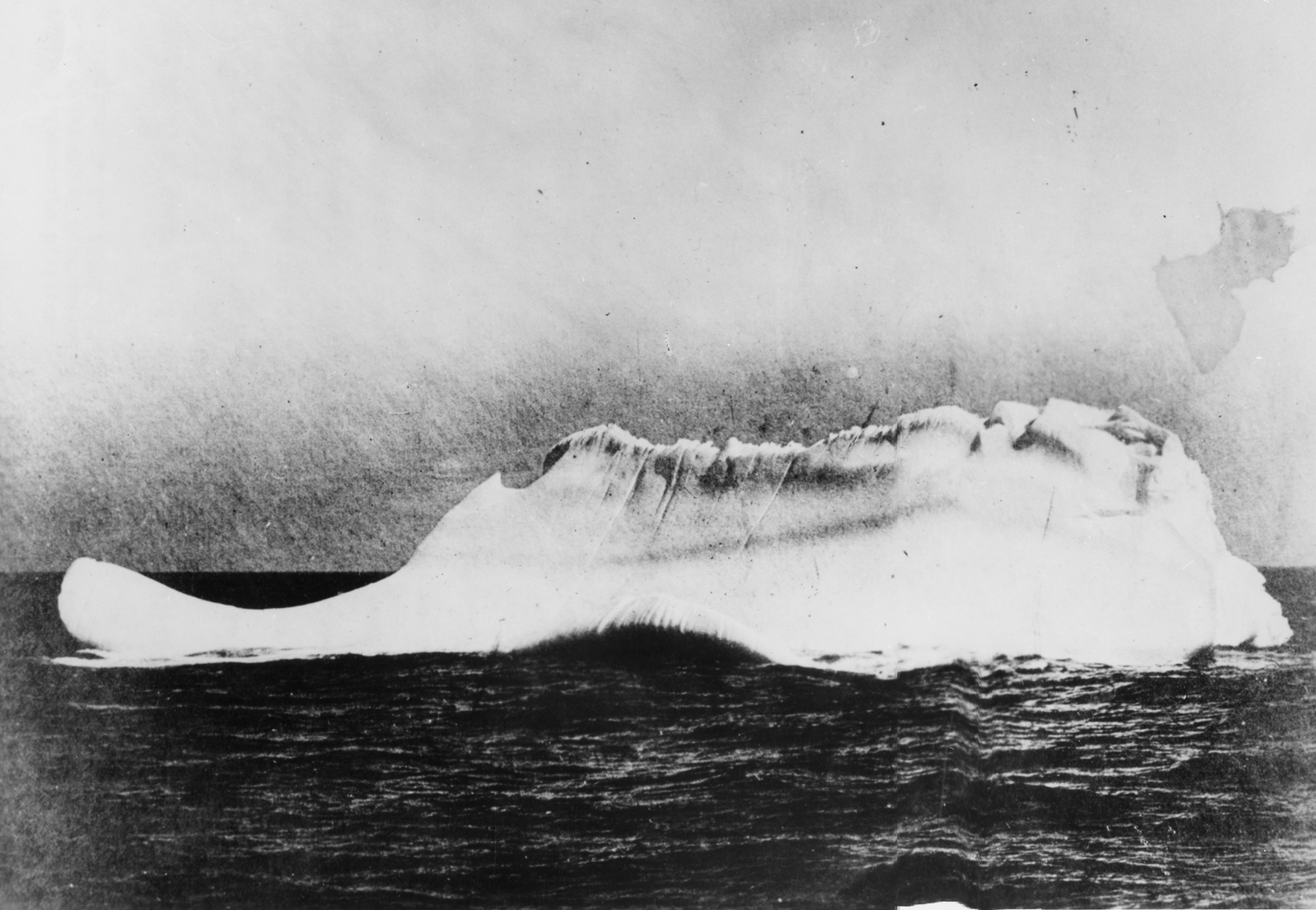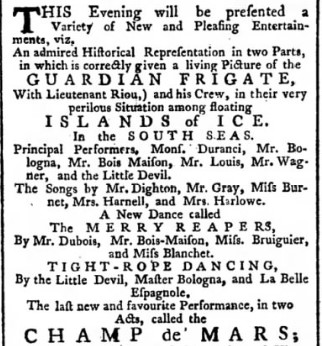Oftentimes when we ask a guest what ship are they most interested in learning about, their response is, “The Titanic!” It is definitely a mesmerizing and very romanticized story, but there are numerous ship tragedies with equally dramatic stories. A quick Google search turned up more than 25 ships that sank due to collisions with icebergs, and we have images of at least four additional ships in our collection. And those are just the iceberg tragedies!
One tale of a ship hitting an iceberg is particularly thrilling and made international news, which for the late 1700s is really saying something. HMS Guardian left England in September 1789 heading for Port Jackson, today known as Sydney, Australia.

Lieutenant Edward Riou was the captain of the ship, and his orders were to take convicts and officials to the new convict colony in Botany Bay. The crew refilled their supplies at the Cape of Good Hope at the southern tip of Africa and departed for the next leg of the trip in December 1789. Not long after leaving Africa, on December 24, 1789, Guardian came across a few icebergs and Captain Riou wanted to gather ice to use for fresh water for the animals that were onboard. He sent a few crew members to a nearby iceberg, who returned safely with the chunks of ice. Unfortunately, just a few hours later a thick fog settled in and they could no longer see where they were going.
The Captain’s log reports that HMS Guardian hit the ice at least three times, causing the ship to lose its rudder and it quickly began taking on water. All hands (crew and convicts alike) worked tirelessly at the pumps to try and save the ship. They attempted fothering the ship, which means they tried using a sail slid under the hull containing fibers or animal poop to plug up and stop the flow of water through the leak (as a mom of two young kids I imagine it to be like a giant diaper for the ship, ha!), but they were not successful.
As time wore on, the sailors began to grow tired from operating the pumps, so Captain Riou shared some food and alcohol, which helped raise spirits by a small degree. Eventually, the crew begged Captain Riou to allow them to escape in the small jolly boats and cutters. He finally agreed, sending them with a letter describing their heroic efforts to save the ship. Captain Riou chose to stay behind with what everyone knew was a sinking ship, a death sentence.
The two images that we have in our collection depict the departing crew members as they left the ship, waves crashing around them, and icebergs towering over them.
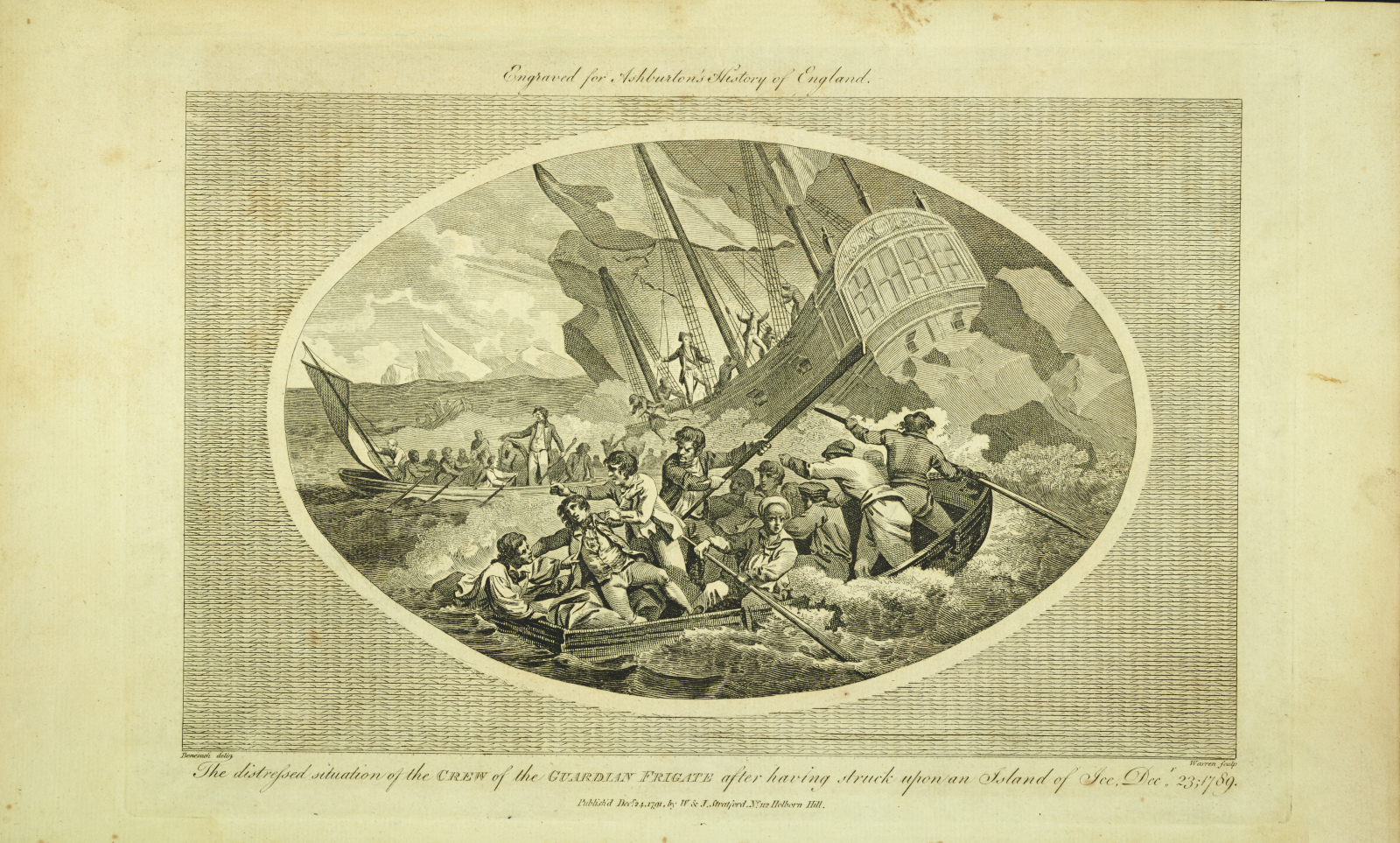

Sadly, the tale of the four small boats is fairly short: only one of them, with 15 people, survived the voyage and were picked up by a French ship in January 1790 after drifting for nine days. The others were never seen again. From these survivors, word reached England about the loss of the ship and the remaining crew.

But unknown to the world at the time, Captain Riou proved his sailing and leading abilities and managed to direct the 21 convicts and 40 other crew members who chose to remain with Guardian. They stayed alive and afloat for nearly two months until the disabled Guardian floated back close enough to the Cape of Good Hope and someone spotted them on February 21, 1790 and sent a rescue ship. (For detailed information about how Riou kept them alive and the work the crew did during those two months, I suggest Margaret E. Schotte’s book Sailing School: Navigating Science and Skill, 1550-1800.)
Everyone who remained aboard Guardian survived and Riou became an overnight hero once word reached England. The convicts boarded other ships to continue their journey to Australia, but thanks to Riou’s letters testifying to their dedication and hard work to save the King’s ship, administrators pardoned 14 of the 21 immediately upon arrival.
The event became such a sensational story of bravery and survival (and I’m sure other captains used it as a testament to having faith in your captains and their leadership) that people wrote poems, songs, and plays in Riou’s honor. He was put on trial for the loss of the ship, which Riou had hoped to save, but it was in such bad shape it had to be run aground and broken apart. The trial was just a formality and Riou was quickly acquitted.
For me, the most sensational part of this story is that it wasn’t even Riou’s first crazy adventure, nor his last!!
There is some dispute about exactly when he was born, but Stephen and Dorothy Riou baptized Edward in 1762. For an image of Riou, visit here. He joined the Royal Navy at the age of 12 and served on two different ships before joining Captain Charles Clerke and HMS Discovery on February 22, 1776 as part of Captain James Cook’s third (and infamously final) voyage to explore the Pacific. Seriously, by the time this kid was about 14 he was already part of what would become an incredibly historic voyage!
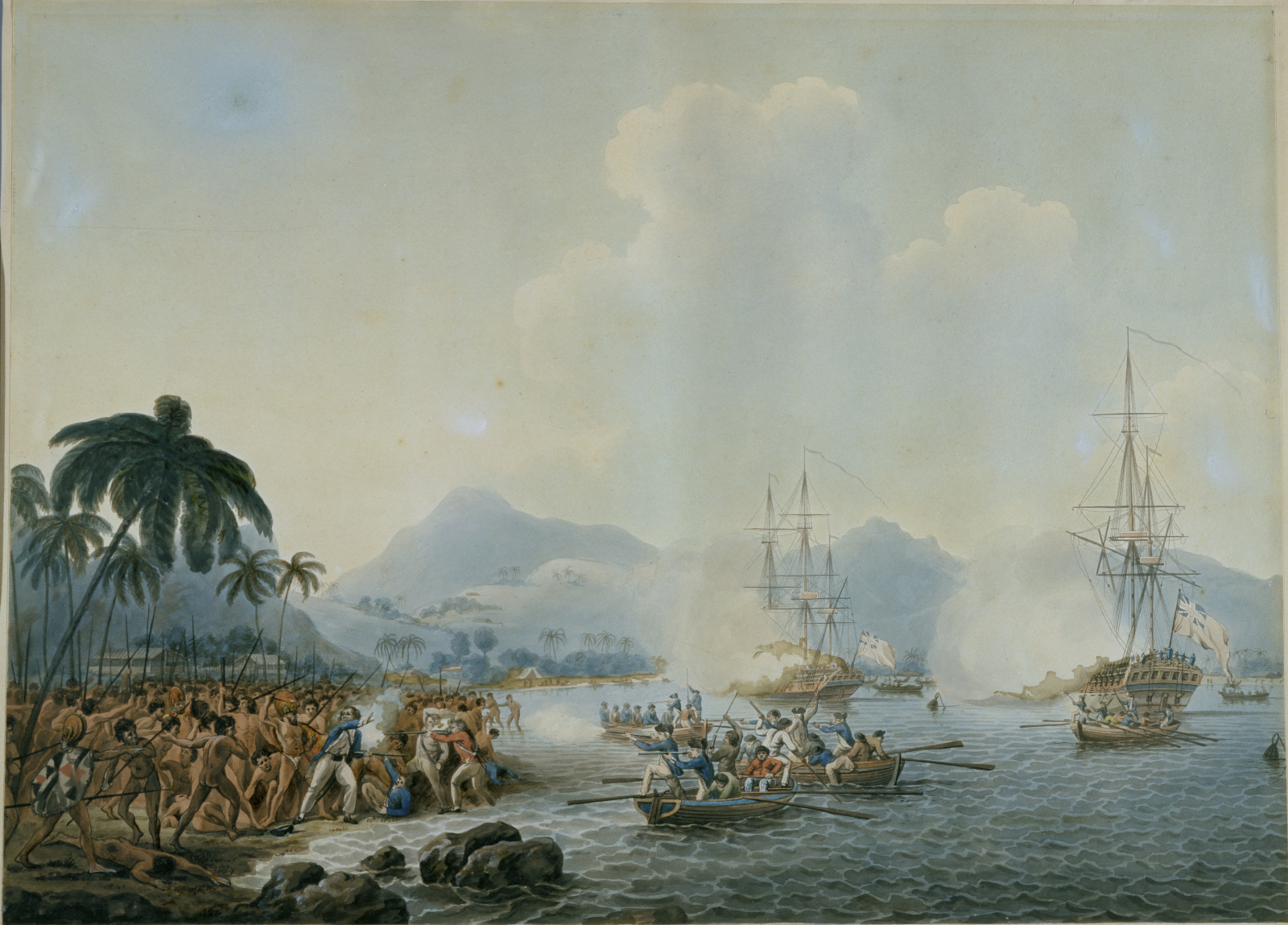
One of this fellow crew members was William Bligh, who later went on to make history when his crew on HMS Bounty mutinied against him. Riou must have witnessed at least some small part of the interaction in February 1779 between Cook and the Hawaiians, sensed the tension among the crew, and heard the commotion as the two sides clashed and Cook eventually lost his life. What were you doing when you were 17?
Riou kept a log while onboard, which brings us to our next crazy story. Riou found a dog while Discovery and Resolution and their crews visited New Zealand, but apparently the dog’s favorite pastime while sailing was to nip at and bite the crew who were not at all fond of the animal. When the ship next pulled into port the crew accused the dog of crimes, held a trial, found the dog guilty, and then killed and ate him. The poor doggie! After Captain Cook was killed in Hawaii, Captain Clerke took command of Cook’s HMS Resolution and brought Riou to that ship to finish out the voyage.
Between 1780 and 1789 Riou served on three other ships before receiving command of HMS Guardian, a role that changed his life. After surviving the iceberg and near sinking, he rose in ranks until he found himself captain of HMS Amazon under Vice Admiral Horatio Nelson. Seriously? He served under Cook AND Nelson? What kind of luck did this guy have? As it turns out, he had used it all up.
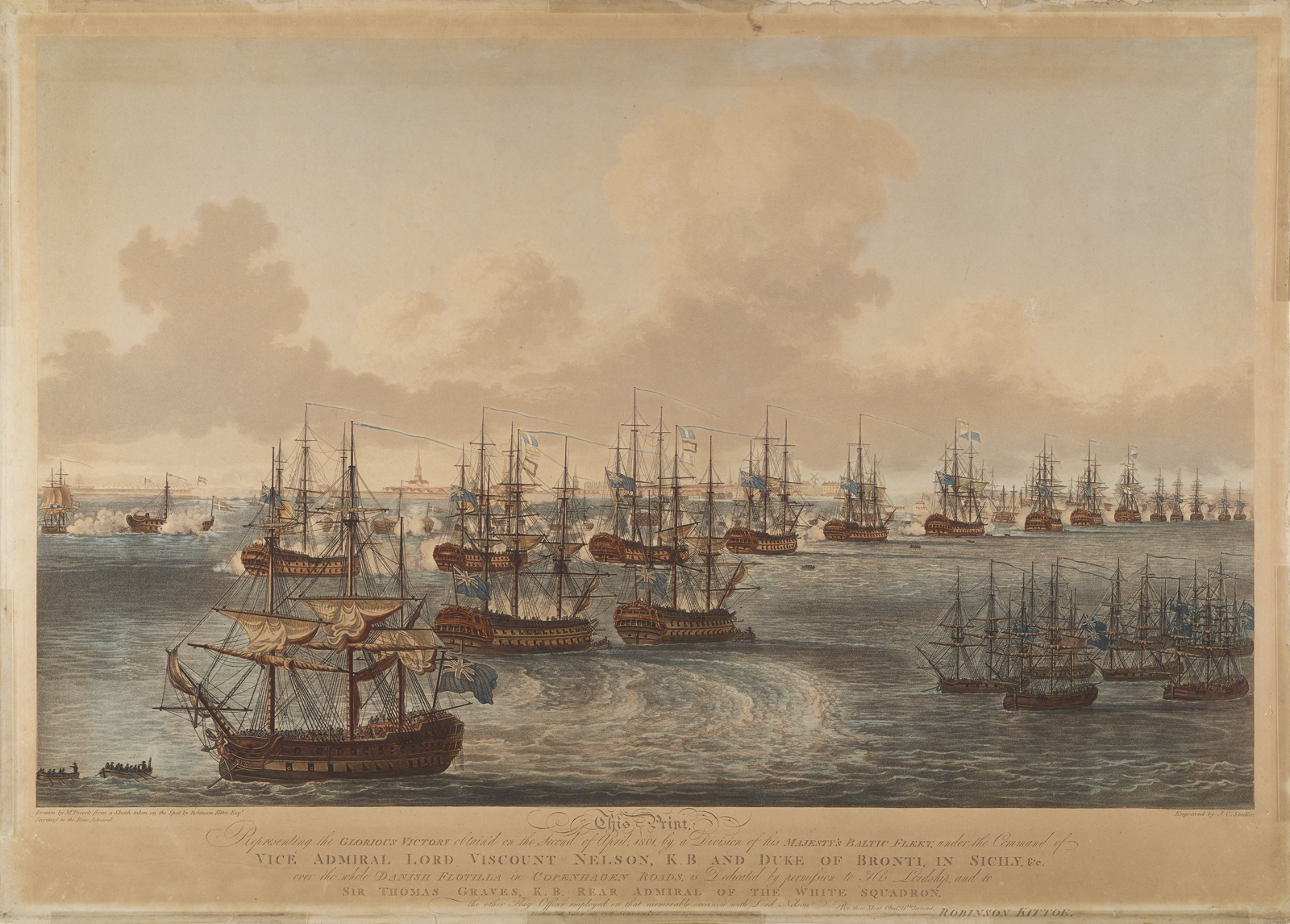
During the Battle of Copenhagen, when Nelson was forced to attack Trekroner Fort after the Dutch allied themselves with the hated French, Riou was in charge of the smaller boats and frigates. While the battle raged, Riou saw Admiral Parker’s signal to retreat. So, not being able to see Nelson’s HMS Elephant, he began turning Amazon around. About that time, Riou was wounded in the head by what I imagine to have been a large wooden splinter. OW! His crew described him sitting on a gun carriage, tending to his head, and directing and encouraging his crew when a cannonball came directly for him, hitting him in the mid-section and leaving two parts of Captain Edward Riou for the crew to mourn.
Remember when I said this guy’s life coincided with some crazy events? Admiral Parker’s signal to retreat is the EXACT SAME SIGNAL to which Nelson reportedly said, “I have only one eye…and I have the right to be blind sometimes…I really do not see the signal.” Nelson then raised his telescope to his blind eye, ignored the signal, and continued to fight and win. While this is not the origin of the phrase, “to turn a blind eye,” it helped to popularize it. Riou’s life touched many important historical events, and it ended with as much adventure as my modern self can imagine: a battle raging from wooden sailing ships, cannonballs and smoke everywhere, and history in the making.
